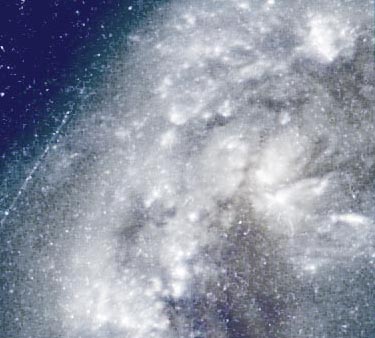Explanation: This galaxy is having a bad millennium. In fact, the past 100 million years haven't been so good, and probably the next billion or so should be quite tumultuous. NGC 4039 was a normal spiral galaxy, minding its own business, when NGC 4038 crashed into it. The evolving wreckage, known as the "Antennae", is pictured above. As gravity pulls each galaxy apart, clouds of gas slam into each other and bright blue knots are formed. These knots are large clusters of stars imbedded in vast regions of ionized hydrogen gas. The high abundance of relatively dim star clusters is quite unlike our Milky Way's globular cluster system, though. Perhaps some of these young star clusters will go on to form globular clusters, while others will disperse through close gravitational encounters. The above picture is centered around the larger of the two interacting galaxies: NGC 4038. The diagonal streak across the upper left is unrelated to the colliding galaxies. The color contrast in the above three-color mosaic was chosen to highlight extended features.
1999 2000 2001 2002 2003 2004 2005 2006 2007 2008 2009 2010 2011 2012 2013 2014 2015 2016 2017 2018 2019 2020 2021 2022 2023 2024 2025 |
Yanvar' Fevral' Mart Aprel' Mai Iyun' Iyul' Avgust Sentyabr' Oktyabr' Noyabr' Dekabr' |
NASA Web Site Statements, Warnings, and Disclaimers
NASA Official: Jay Norris. Specific rights apply.
A service of: LHEA at NASA / GSFC
& Michigan Tech. U.
|
Publikacii s klyuchevymi slovami:
NGC 4038 - vzaimodeistvuyushie galaktiki - zvezdnoe skoplenie - spiral'naya galaktika - gravitaciya
Publikacii so slovami: NGC 4038 - vzaimodeistvuyushie galaktiki - zvezdnoe skoplenie - spiral'naya galaktika - gravitaciya | |
Sm. takzhe:
Vse publikacii na tu zhe temu >> | |
